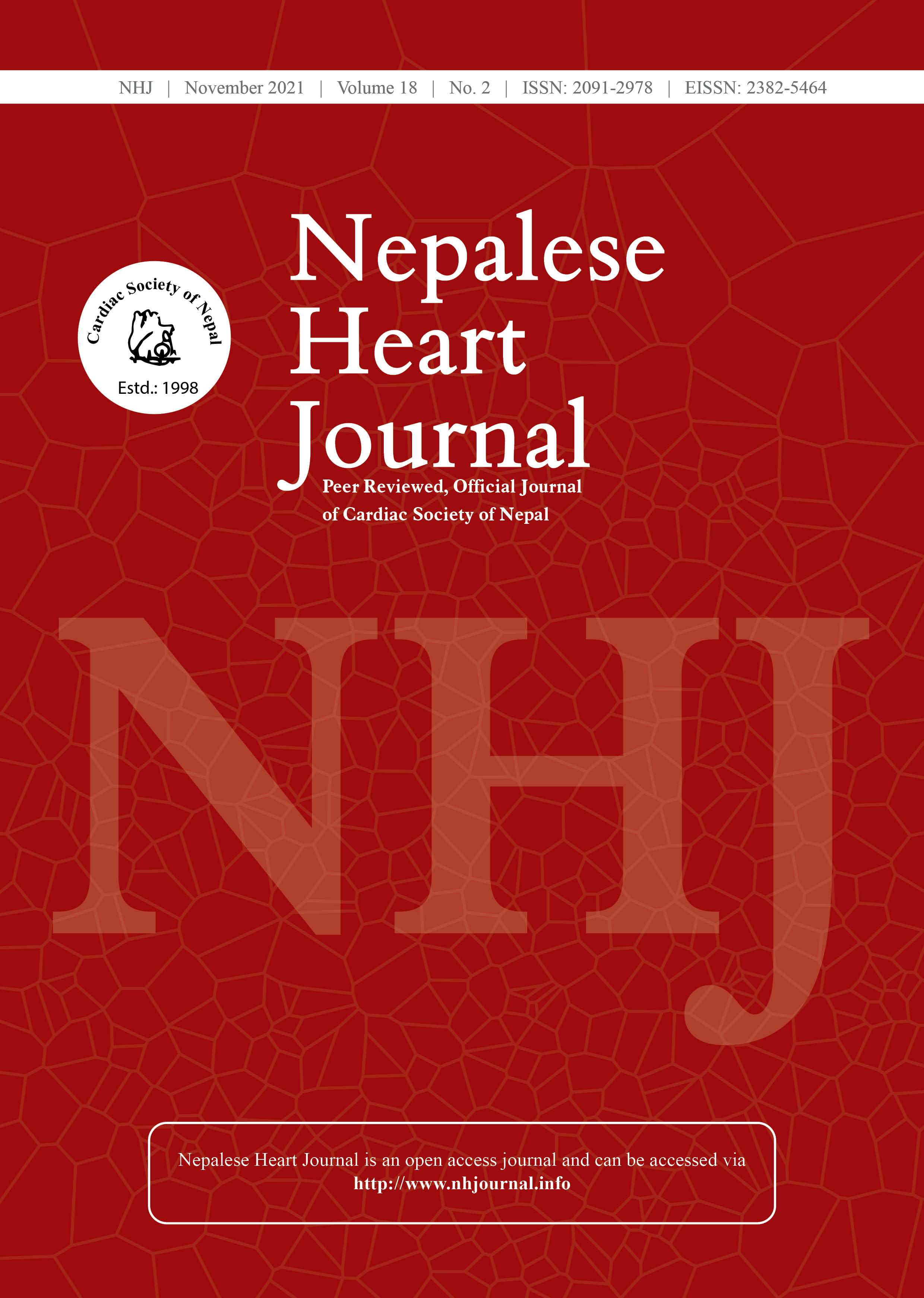Transcatheter Closure of Atrial Septal Defects with 40 mm Septal Occluder in Shahid Gangalal National Heart Centre, Nepal
DOI:
https://doi.org/10.3126/njh.v18i2.40427Keywords:
Large ASD Secundum, Septal occluder, Transcatheter ClosureAbstract
Background and Aims: Transcatheter closure of Atrial septal defect (ASD) is one of important modality of treatment these days for ASD secundum. However, there is a paucity of data on transcatheter closure of ASDs with ³40 septal occluder. We aim to study the outcome of ASD device closure with ³40 mm Septal Occluder in Shahid Gangalal National Heart Centre, Nepal.
Methods: It was a prospective single center study conducted at Shahid Gangalal National Heart Centre, Nepal.Among the 27 patient who underwent successful device closure with ³40 mm devices from January 2016 till December 2019, twenty-six patients could be prospectively followed up during May 2020 till December 2020. A Performa was designed to collect information about age, gender, ASD size, ASD device type and size. Right atrium(RA) and right ventricle(RV) dimension, level of tricuspid regurgitation (TR) and tricuspid regurgitation pressure gradient before the procedure and at the time of follow up were also recorded.
Results: Amplatzer septal occluder (40mm) was used in 25 (96.1%) patients and Memopart device (42mm) was used in 1 (3.9%) patient. Before the procedure all patients had dilated RA and RV, Mild TR, moderate TR and severe TR was present in 14 (53.8%), 10 (38.4%) and 2 (7.7%) patients respectively. At follow up, only one (3.9%) patient had dilated RA and RV. Mean Tricuspid regurgitation pressure gradient decreased from mean 44.4 mmHg to 18.9 mmHg.
Conclusion: Transcatheter Closure of Atrial Septal Defects with ³40 mm Septal Occluder is safe and effective in short term follow up.
Downloads
Downloads
Published
How to Cite
Issue
Section
License
Copyright (c) 2021 Nepalese Heart Journal

This work is licensed under a Creative Commons Attribution 4.0 International License.
This license enables reusers to distribute, remix, adapt, and build upon the material in any medium or format, so long as attribution is given to the creator. The license allows for commercial use.




